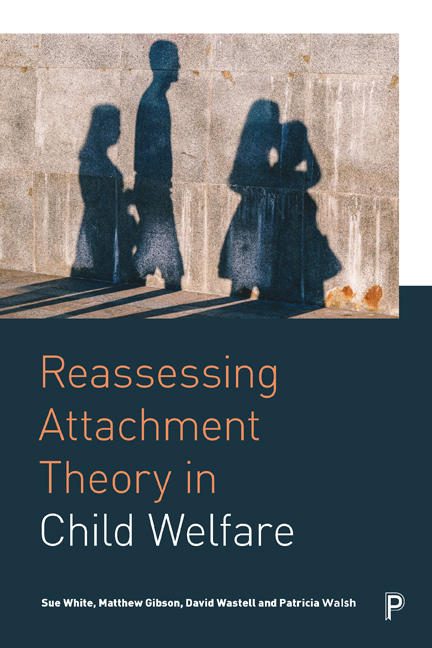Book contents
- Frontmatter
- Contents
- List of Figures, Table and box
- About the Authors
- Acknowledgements
- Preface: Becoming Attached to Attachment Theory
- 1 Love is a Wondrous State: Origins and Early Debates
- 2 Social work and the Attachment Story: a Felicitous Bond?
- 3 Shaping Practice: Prescribing Assessment
- 4 Practising Attachment Theory in Child Welfare
- 5 Exhibiting Disorganised Attachment: not even Wrong?
- 6 Breaking the back of love: Attachment Goes Neuro-Molecular
- Coda: love Reawakened?
- References
- Index
2 - Social work and the Attachment Story: a Felicitous Bond?
Published online by Cambridge University Press: 23 February 2021
- Frontmatter
- Contents
- List of Figures, Table and box
- About the Authors
- Acknowledgements
- Preface: Becoming Attached to Attachment Theory
- 1 Love is a Wondrous State: Origins and Early Debates
- 2 Social work and the Attachment Story: a Felicitous Bond?
- 3 Shaping Practice: Prescribing Assessment
- 4 Practising Attachment Theory in Child Welfare
- 5 Exhibiting Disorganised Attachment: not even Wrong?
- 6 Breaking the back of love: Attachment Goes Neuro-Molecular
- Coda: love Reawakened?
- References
- Index
Summary
We would argue … that the process of socialization as promoted under developmentalism is no more than a story. However, it has become a story with such compelling plausibility it has overwhelmingly acquired the seeming status of incontrovertible truth … Thus, it has come to be treated as an objective analysis of human enculturation and its boundedness by the biology of the child. (Stainton Rogers and Stainton Rogers, 1992, pp 39–40)
In the previous chapter we discussed the origins of attachment theory and its unique synthesis of apparently disparate ideas. We noted that the observations by social worker James Robertson of distressed children admitted to hospital and separated from their parents were foundational to Bowlby's search for a more sophisticated theoretical explanation for the effect on children of the experience of living. We charted the extraordinary rise and durability of this heterogeneous artefact. Its ascent is attributable to a range of actors and contexts and to the ‘united front’ presented by its principal supporters. Attachment research remains a disparate field but the theory, in popular use, has, we shall argue, come to function as a myth. By myth we do not refer to a false belief, but rather, after Barthes (1973), to the linguistic trick of presenting as wholly natural a set of cultural values or concepts. Myth is a system of ‘signs’, linguistic or visual, which have a meaning beyond their literal significance, conveying fundamental ‘truths’ about the nature of the world, its origins, composition and ordering. ‘Myth is constituted by the loss of historical quality of things … the quality that they were once made … what is got rid is their contingent, historical, fabricated quality’ (Barthes, 1973, p 142). Myth thus converts History (the concrete event, its description, the messy realities of life) to Nature (a priori, complete, incorrigible). Myth mystifies, endowing a natural and eternal justification for the historical and political. Myth ingeniously moves from ‘ought’ to ‘is’, performing its ‘cultural work’ of naturalising the status quo (Wastell, 2007): myth is experienced as ‘innocent speech: not because its intentions are hidden – if they were hidden, they could not be efficacious – but because they are naturalized’ (Barthes, 1973, p 131).
- Type
- Chapter
- Information
- Reassessing Attachment Theory in Child Welfare , pp. 23 - 44Publisher: Bristol University PressPrint publication year: 2019

